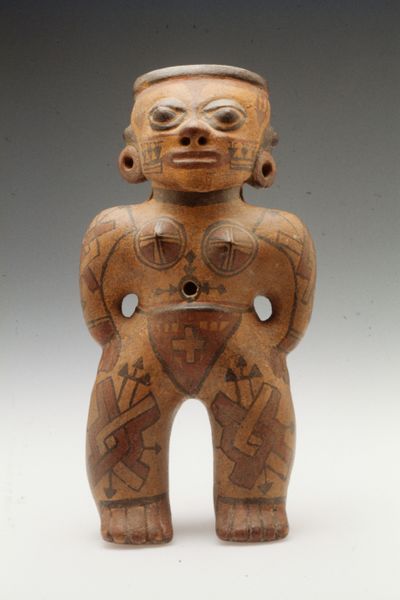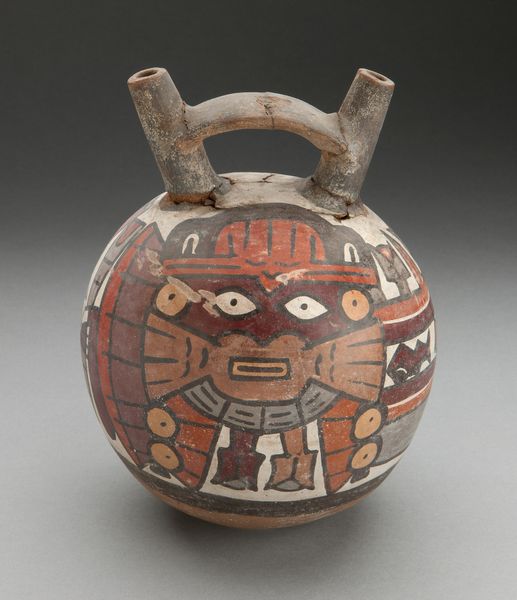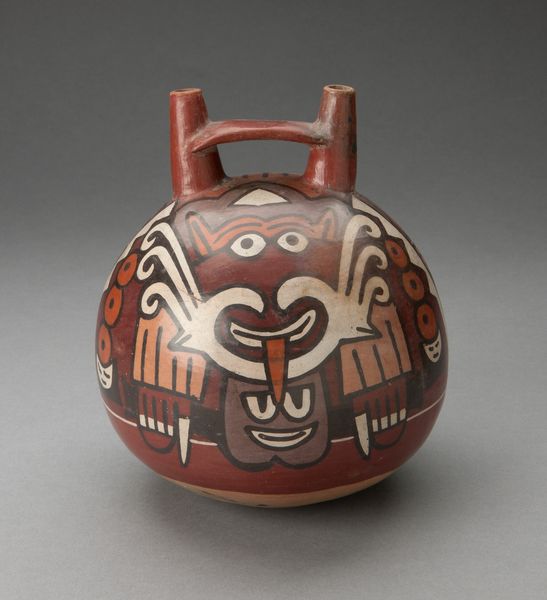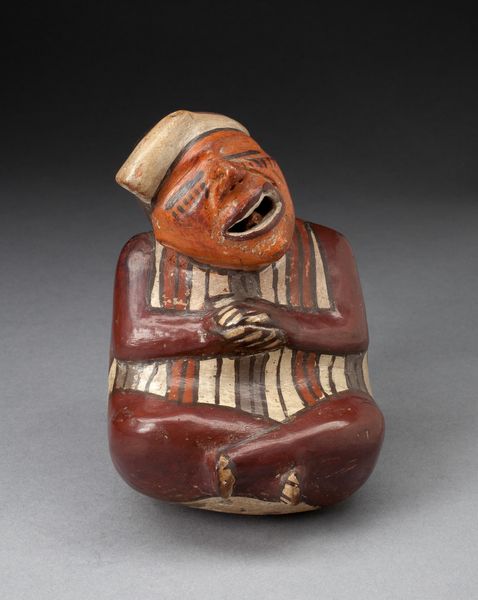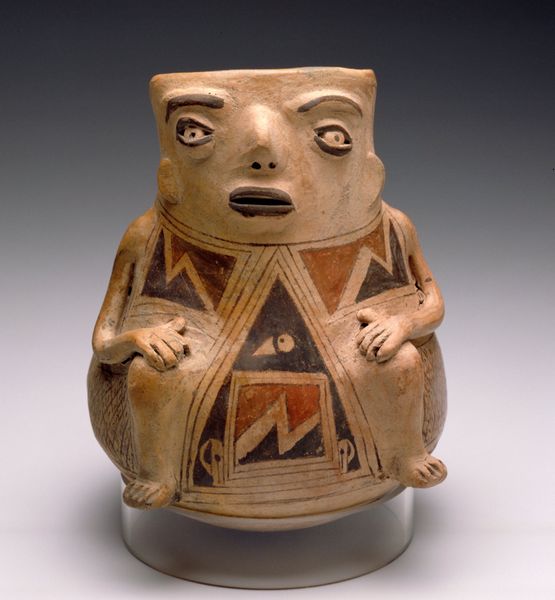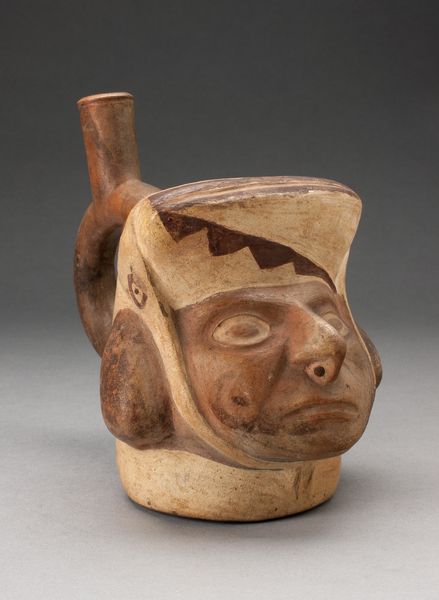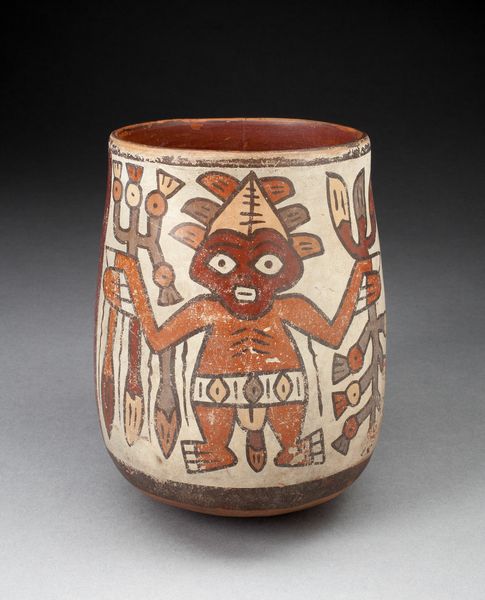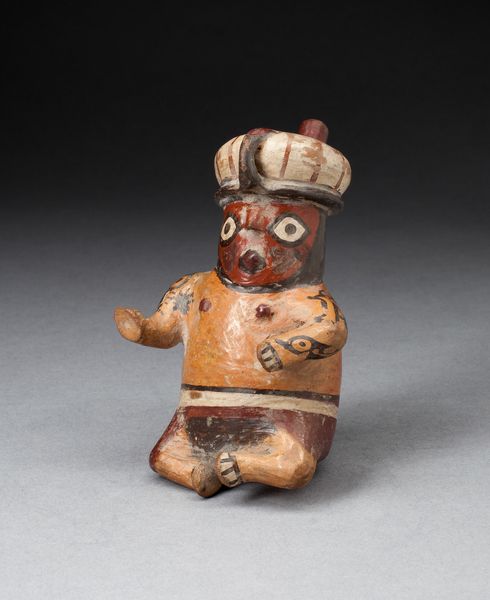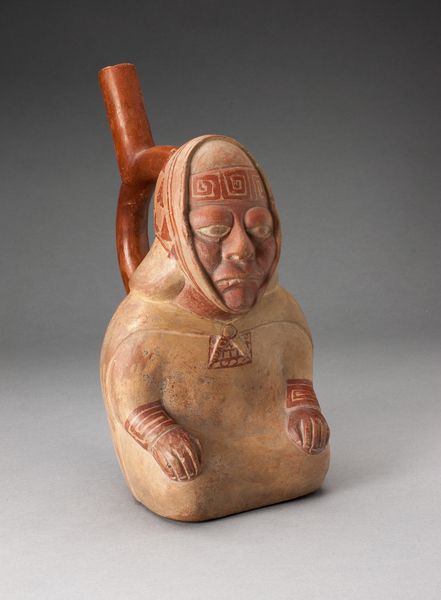
Single Spout Vessel in the Form of a Seated Figure Wearing Mask and Headdress, Holding a Trophy Head c. 180 - 500
0:00
0:00
ceramic, terracotta
#
sculpture
#
ceramic
#
sculptural image
#
figuration
#
form
#
terracotta
#
indigenous-americas
Dimensions: 21 × 12.1 cm (8 1/4 × 4 3/4 in.)
Copyright: Public Domain
Curator: Here we have an exceptional Nazca ceramic piece dating from around 180 to 500 AD. Titled "Single Spout Vessel in the Form of a Seated Figure Wearing Mask and Headdress, Holding a Trophy Head," it currently resides at the Art Institute of Chicago. Editor: Wow, what a statement! My immediate impression is one of ceremonial weight. The earth tones and the formal posture of the figure suggest something of great importance is being depicted. Curator: Precisely. Let’s consider the ceramic medium itself. The way the clay is molded and painted tells us much about the skills available to the Nazca people, their firing techniques, their access to pigments. The act of creating such a vessel speaks to a complex production process. Editor: And it's not merely decorative; it's functional, as a vessel, yet elevates daily use to ritual status through potent imagery. That trophy head, for instance. While gruesome to our modern sensibilities, it's a powerful symbol within the context of warfare, sacrifice, and perhaps ancestor veneration. The victor gains something intrinsic from their defeated foe. Curator: Absolutely. This wasn't simply about conquest; it was about acquiring power and perhaps ensuring the fertility of the land through ritual practices. Look at the detailed rendering of the figure's mask and headdress; the creation process itself, from mining the clay to its firing and painting, had significance. Each step possibly imbued with meaning. Editor: Indeed, the mask hides and reveals simultaneously. Is it a representation of a deity, a priest, or a warrior transformed through ritual? It makes you think about the Nazca understanding of identity, performance, and the porous boundaries between the human and divine. And holding a trophy head reinforces cycles of power—of dominance but also continuity. Curator: By focusing on the creation and materiality of the piece, we gain a fuller picture of Nazca social structures. Access to specialized skills and resources likely dictated hierarchies within their society. Editor: Seeing those potent images through your lens, highlighting labor, resources and making gives us so much more to appreciate. A glimpse into the lived world that has faded into memory. Thank you for providing an entry to that history. Curator: Thank you. Looking at the iconographic choices certainly enhances our insight into a culture so removed from our own and reminds us how symbolism transcends material form.
Comments
No comments
Be the first to comment and join the conversation on the ultimate creative platform.
